 After more than ten years of music education advocacy and “storming the Hill,” it feels like we have been in a holding pattern since January 1, 2016 as the realities of the passage of the Every Student Succeeds Act (ESSA) are sorted out and understood. Though it’s true that it will take time for the sea change to be realized, there is much we can do to become educated about the law ourselves and to inform our communities, starting now.
After more than ten years of music education advocacy and “storming the Hill,” it feels like we have been in a holding pattern since January 1, 2016 as the realities of the passage of the Every Student Succeeds Act (ESSA) are sorted out and understood. Though it’s true that it will take time for the sea change to be realized, there is much we can do to become educated about the law ourselves and to inform our communities, starting now.
I call the strategy below the “Three ‘R’s of ESSA Advocacy,” which involves meeting with school and community leaders to share goals to expand equity and access to music and arts education for all children during the school day. Decisions about how and why federal, state and local funds will be used under the new federal guidelines will be made by professional education administrators in your state and school districts. These people need to hear from us as informed and interested advocates and that we are standing by to assist – and promote – the important decisions that will create more arts education opportunities for all children.
Strategy Breakdown: The Three “R”s
1. REINFORCE what is in ESSA regarding music and the arts
Music is designated as part of a well-rounded education in on Page 298 of Section 1177 of the Every Student Succeeds Act www.congress.gov/114/bills/s1177/BILLS-114s1177enr.pdf
“WELL-ROUNDED EDUCATION — The term ‘well-rounded education’ means courses, activities, and programming in subjects such as English, reading or language arts, writing, science, technology, engineering, mathematics, foreign languages, civics and government, economics, arts, history, geography, computer science, music, career and technical education, health, physical education, and any other subject, as determined by the State or local educational agency, with the purpose of providing all students access to an enriched curriculum and educational experience.”
ESSA outlines subjects that are important for a well-rounded education and what is included in the curriculum is “determined by the state or local education agency.” In other words, states and local districts have the opportunity to act on the overwhelming belief of parents and teachers that music should be part of the school curriculum and available to all students. Resource: Striking a Chord, The Public’s Hopes and Beliefs for K-12 Music Education www.nammfoundation.org/educator-resources/striking-chord-publics-hopes-andbeliefs-k-12-education-united-states-2015
2. REMIND state, district and community leaders, and other music and arts stakeholders about the benefits of music education. Of significance to ESSA is music education’s impact on school climate and effectiveness and how opportunities for students (and families) to participate in music and arts programs provide a foundation that strengthens students’ connection to school. Links to research that supports this statement are available at www.nammfoundation.org/why-music-matters/why-learn-play-music
www.nammfoundation.org/sites/default/files/facts%20and%20quotes.pdf
3. REQUEST school and community leaders to work with school district, who will ultimately work with state education departments to:
• Use federal, state and local education funds to develop and expand music education programs available to all students during the school day as part of school turnaround and reform objectives.
• Use federal, state and local education funds to pay certified music and arts educators and supporting needed educational materials – to allow for access and opportunity for more students to receive the benefits of music.
• Use federal, state and local education funds to expand music education curriculum offerings to under-served students.
• Review the district’s opportunities to participate in the federal preschool grant program that included the arts within the “Essential Domain of School Readiness” definition [hyperlink “essential domain of readiness” www.ed.gov/early-learning/elc-draft-summary/definitions]
• Work with district administration on accountability metrics that include opportunity for music education for all students in K-12 as part of school climate assessments that are reportable to both state and federal education agencies.
These Three “R”s offer a starting point for conversations between advocates in school districts, state education departments and legislators. It is important to get conversations started and development relationships within districts and states so opportunities to expand music and arts education can be the true win of ESSA.








